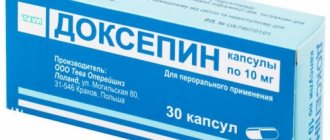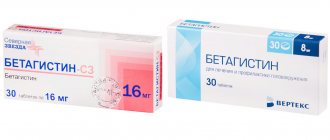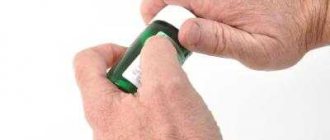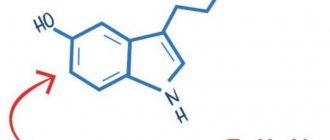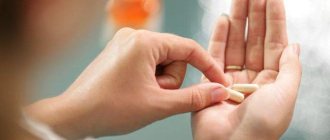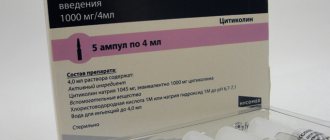Neurosis Treatment of neurosis in children and adults
- Doing physical exercises.
- Refusal of alcohol.
- Limitations on coffee consumption.
- Limit the use of caffeine-containing products.
Drug increases in dopamine levels for depression are prescribed against the background of the risk of complications caused by a deficiency of this hormone.
The patient is prescribed to take Phenylalaline, Tyrosine, Ginkgo Biloba. The main component of Phenylalaline is a specific amino acid that converts tyrosine, and then processes it into dopamine. If hormone secretion is disrupted, this drug is indispensable. Ginkgo Biloba helps normalize blood circulation. Taking it increases the concentration of oxygen in the organs.
Tyrosine has a direct effect on hormone production. The highest percentage of tyrosine is found in vegetables and fruits. A person is recommended to eat more greens, beets, apples, and protein foods. It is advisable to replace black tea with herbal or ginseng decoction.
Analogues, cost
Amitriptyline is an affordable drug. You can buy it at any pharmacy with a prescription from a doctor. The cost depends on the location of the pharmacy and manufacturers.
- Tablets 25 mg, 50 pcs. – 26.50 rub.;
- Tablets 10 mg, 50 pcs. – 27.00 rub.;
- Tablets 20 mg, 50 pcs. – 46 rubles;
- Ampoules 2 ml, 10 pcs. – 46 rub.
Amitriptyline is produced in Denmark, Russia, Croatia, Poland, Germany, and the Czech Republic.
How much does Amitriptyline cost? The average price in pharmacies is 30 rubles.
If necessary, you can replace Amitriptyline with an analogue according to the ATC code, list of drugs:
- Amizol,
- Amirol,
- Saroten retard,
- Tryptisol,
- Elivel
When choosing analogues, it is important to understand that the instructions for use of Amitriptyline, price and reviews do not apply to drugs with similar effects. It is important to consult a doctor and not change the drug yourself.
Store at temperatures between 10 °C and 25 °C in a dry, dark place out of the reach of children. Shelf life - 2-3 years (depending on the form of release and manufacturer). Do not take after the expiration date indicated on the package! Dispensing conditions from pharmacies are by doctor's prescription.
Medicine for depression - Amitriptyline
Amitriptyline is a widely known antidepressant. It effectively combats depression and severe anxiety. Moreover, unlike many antidepressants, it does not lead to side effects such as hallucinations and the like. In everyday life, amitriptyline is prescribed for migraines, as its effectiveness in combating chronic headaches has been proven.
Amitriptyline tablets are white coated. In the form of a solution, the medicine is a clear, colorless liquid, sometimes slightly colored.
Amitriptyline - indications for use
So, let’s consider for what indications the drug should be used.
Causes and symptoms of VSD
The occurrence of the disease in children can be caused by heredity or any developmental abnormalities.
In adults, the range of possible causes is wider:
- physical inactivity, or, on the contrary, excessive physical activity;
- sleep problems - insomnia, waking up too early and difficulty falling asleep;
- lack of normal balanced nutrition;
- changes in time zones and climatic conditions;
- pregnancy and menopause in women, puberty in adolescents and associated hormonal disorders;
- depression, nervous overload, constant fatigue, stress.
Under the influence of such factors, the activity of the autonomic nervous system can be disrupted, which provokes metabolic disorders in cardiac and vascular tissues.
The body begins to react incorrectly to the most common loads and symptoms of VSD begin to appear:
- Pressure surges, heart rhythm disturbances.
- Pain, burning and other uncomfortable sensations in the heart area.
- Difficulty breathing, as if there is not enough air.
- Irritable bowel syndrome - abdominal pain, stool and digestion disorders.
- Increased sweating.
- Pain when urinating.
- Hyperthermia or hypothermia - body temperature is slightly increased or decreased. This phenomenon can be either periodic or permanent.
VSD is often “masked” as other serious diseases and has similar manifestations. Therefore, the diagnosis of “vegetative-vascular dystonia” is made only after a thorough examination of the patient, which excludes the possibility of any other diseases with similar symptoms.
VSD is divided into four main types: hypertensive, hypotonic, mixed and cardiac. The first two types are characterized by high and low blood pressure, respectively. With a hypertensive course of the disease, patients experience headaches, fatigue and weakness, with a hypotonic course - weakness, increased sweating, and dizziness.
Mixed VSD is a combination of the first two types and their corresponding manifestations.
With the cardiac type of disease, patients most often complain of pain and other discomfort in the heart area, even while at rest. There are also periodic heart rhythm disturbances that go away on their own.
Amitriptyline - use, instructions, reviews, price, indications
Mild forms of depression usually do not require drug treatment; psychological support and assistance are sufficient. But even with moderate and, even more so, with severe depression, intervention with medication is necessary.
Treatment in this case should be carried out over many months, since symptoms may recur if amitriptyline is stopped quickly. And the dose reduction should not happen suddenly, but gradually over several weeks.
What are they needed for? Depression is thought to be caused by decreased levels of certain chemicals in the brain called neurotransmitters, which are involved in transmitting information between neurons (nerve cells) and from neurons to muscle cells.
They influence mood by stimulating brain cells. Amitriptyline, like other tricyclic antidepressants, blocks the reuptake of these substances, thereby increasing the levels of neurotransmitters.
We figured out a little how it works. Now, what exactly does this drug do, or in what cases is amitriptyline indicated for use?
Firstly, during depression (especially with anxiety and sleep disorders), this drug improves mood, increases physical activity, improves appetite, and restores interest in life.
It has a calming effect, so for anxiety and insomnia there is no need for additional sleeping pills. Used for emotional disorders, schizophrenia, alcohol withdrawal syndrome as part of complex therapy.
Sometimes amitriptyline may find indications in the treatment of nocturnal enuresis (urinary incontinence) in children after 6 years of age. It is also used in the treatment of neuralgia, such as postherpetic neuralgia after suffering from herpes zoster, for chronic pain syndrome, in particular, pain in cancer patients, migraines, rheumatic diseases, during the treatment of peptic ulcers.
- tablets are white with a yellowish tint, which contain the active ingredient amitriptyline hydrochloride - 11.32 mg in one tablet, which corresponds to the content of amitriptyline in an amount of 10 mg; pack of 50 pieces – from 22 rubles;
- tablets are white with a yellowish tint with the dosage of the active substance amitriptyline hydrochloride - 28.3 mg, which corresponds to the content of amitriptyline - 25 mg; pack of 50 pieces - from 25 rubles.
The dosage regimen for this drug is selected individually. In no case do not ignore the instructions for use of amitriptyline, do not change the dose without consulting a doctor.
Usual dosage regimen: 1-3 times a day, usually 1 time at night. The tablets are taken without chewing and, so as not to damage the gastric mucosa, immediately after meals.
The adult initial dose is 25-50 mg at night, then the dose is gradually increased taking into account individual tolerance of the drug to a maximum of 300 mg per day in 3 doses (with the largest portion taken at night).
Calmness is possible within a few hours, the full antidepressant effect usually appears after 2-4 weeks. After achieving the effect, the dose can be gradually reduced.
The duration of treatment can range from several months to a year, or even more. Children's dose for the treatment of depression from 6 to 12 years – 10-30 mg per day, after 12 years – up to 100 mg per day; during the treatment of bedwetting from 6 to 10 years - 10-20 mg per day, from 11 to 16 years - up to 50 mg per day.
It is very important to follow the instructions for amitriptyline, as the danger of overdose is high. It is necessary to take emergency measures if there is a rapid heartbeat or loss of consciousness and call an ambulance.
Possible side effects may include drowsiness, sweating, dry mouth, constipation, blurred vision, dizziness to the point of loss of consciousness, difficulty urinating, disorientation, and rapid heartbeat.
How the drug works
How the drug works can be noticed only after a month has passed after the start of its use. But you can’t stop taking pills even in this case. If depression worsens or extremely pessimistic or suicidal thoughts appear, you should immediately consult your doctor.
With normal levels of acetylcholine, the walls of the bladder contract, which causes the organ to empty itself, removing urine. If the substance is not active, then bladder dysfunction is observed. The effect after using the medication in this case is observed after 10 days of its use. Among other things, the medicine is used as a prophylactic drug, after the use of which migraines, depression and neuroses cease to bother you.
The drug is indicated for use when:
Treatment with medication should be carried out with caution if the patient develops:
After taking it, you can sometimes encounter side effects, which are usually caused by incorrect dosage.
The release of serotonin and norepinephrine from the brain structures leads to an improvement in the patient’s mood. If neurotransmitters are reabsorbed into cells, it has no effect on a person's mood.
With the development of depressive conditions, there is a significant decrease in serotonin and norepinephrine substances, which enter the cells in the brain. After taking Amitriptyline for neuroses, seratonin and norepinephrine are not converted into nerve cells in the brain. This helps to alleviate the symptomatic manifestations of depressive conditions.
Interaction
- A hypotensive effect, respiratory depression , and a depressant effect on the nervous system are observed with the joint prescription of medications that depress the central nervous system: general anesthetics, benzodiazepines, barbiturates, antidepressants and others.
- The drug enhances the severity of the anticholinergic effect when taking amantadine , antihistamines , biperiden, atropine, antiparkinsonian drugs, phenothiazine.
- The drug enhances the anticoagulant activity of indadione, coumarin derivatives, and indirect anticoagulants.
- There is a decrease in the effectiveness of alpha-blockers and phenytoin.
- Fluvoxamine , fluoxetine increase the concentration of the drug in the blood.
- The risk of developing epileptic seizures increases, and the central anticholinergic and sedative effects also increase when combined with benzodiazepines, phenothiazines, and anticholinergics.
- Simultaneous administration of methyldopa , reserpine, betanidine, guanethidine, clonidine reduces the severity of their hypotensive effect.
- When taking cocaine, arrhythmia develops.
- Delirium develops when taking acetaldehydrogenase inhibitors, disulfiram.
- phenylephrine , norepinephrine, epinephrine on the cardiovascular system .
- The risk of hyperpyrexia increases when taking antipsychotics and m-anticholinergics.
Amitriptyline and anesthesia
The instructions for the drug say that if you take it, you need to inform the doctor who is going to give you anesthesia - both local and general (for example, this could be a dentist). But in practice, you will get a perplexed face and complete ignorance of what amitriptyline is and how dangerous it can be during anesthesia. If you are taking medium or high doses of amitriptyline, it is best to avoid anesthesia altogether at this point. If you can’t do without this, then this should be the minimum possible dose of anesthetic for a short time. It's best to do everything in a clinic, where they have everything you need in case you pass out. In general, it is better if the clinic is not very far from the hospital. So it is best not to mix amitriptyline with anesthesia. Well, at low doses you can, of course, but also with caution.
Compound
Amitriptyline dragees and tablets contain 10 or 25 mg of the active substance in the form of amitriptyline hydrochloride.
Additional substances in the tablets are: microcrystalline cellulose, talc, lactose monohydrate, silicon dioxide, magnesium stearate, pregelatinized starch.
https://www.youtube.com/watch?v=ytdevru
Additional substances in the dragees are: magnesium stearate, potato starch, talc, polyvinylpyrrolidone, lactose monohydrate.
1 ml of solution contains 10 mg of active substance. Additional substances are: hydrochloric acid (sodium hydroxide), dextrose monohydrate, water for infusion, sodium chloride, benzethonium chloride.
Contraindications
A strong, effective drug is not recommended for use in patients who have the following contraindications for use:
- personal intolerance to components;
- diagnosing myocardial infarction;
- for acute intoxication resulting from an overdose of various medications, including analgesics, hypnotics;
- use is not recommended for acute alcohol intoxication or overdose of psychotropic drugs
- if the patient has angle-closure glaucoma;
- in situations where the patient has bronchial asthma;
- for chronic alcoholism and many other diseases.
Women experiencing symptoms of depression during pregnancy
, it is not recommended to use the medicine in treatment. Use can only be prescribed by a doctor, carefully comparing the potential positive effect and the harm that may be caused to the health of the fetus. A similar approach is used in the treatment of patients who are breastfeeding. It is recommended to suspend lactation while taking it.
In the treatment of very young patients, from several months, this is a fairly strong drug. The appointment can only be made by a physician after conducting an examination and considering other types of therapy. There are a large number of restrictions on use at such a young age.
special instructions
Before starting a therapeutic course, it is important to determine blood pressure indicators over time. This means that a specialist measures blood pressure several days in a row and in different situations in order to understand what numbers are considered normal for the patient. Only after this is Amitriptyline used.
Patients with epilepsy should undergo therapy only under medical supervision, since exceeding the daily dosage of more than 150 mg of the drug leads to a decrease in the threshold of seizure activity. Abrupt cessation of taking the drug can provoke the development of “withdrawal syndrome”, so the dosage is reduced gradually.
An unusual side effect when using the medication is the development of caries. The drug can become an obstacle to driving, so you should avoid it during the period of therapy.
For elderly patients who suffer from chronic intestinal pathologies, the medicine is prescribed with extreme caution, since it can provoke intestinal obstruction.
Overdose
In case of a drug overdose, symptoms can be varied. Some patients report drowsiness and stupor. A comatose state may develop that lasts for several hours.
However, some patients experience increased excitability, anxiety and causeless fear. In most cases, motor activity is reduced, muscle rigidity, disorientation, and coordination of movements are noted. From the cardiovascular system, a critical decrease in blood pressure, cardiac shock, and heart failure are observed.
Often the drug provokes increased activity of the sweat and salivary glands against the background of a sharp and significant decrease in the amount of urine excreted, up to the complete cessation of urination. In exceptional cases, cardiac arrest may occur. If you are allergic to the drug, urticaria develops, in which the body becomes covered with a large rash or blisters filled with clear liquid.
If any adverse reactions or symptoms of overdose occur, you should immediately stop taking the medicine and seek medical help.

